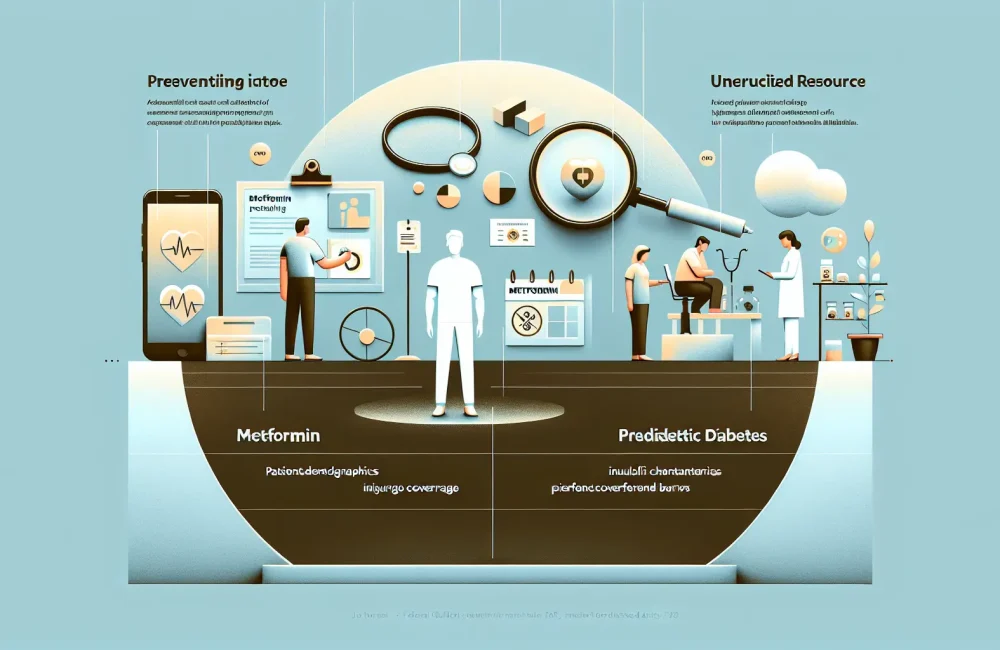By CAFMI AI From JAMA
Mechanisms and Clinical Promise of Semaglutide in AUD
Semaglutide, a glucagon-like peptide-1 (GLP-1) receptor agonist originally approved for managing type 2 diabetes and obesity, has recently emerged as a promising therapeutic agent for alcohol use disorder (AUD). Its mechanism involves modulation of GLP-1 receptors in the brain, particularly within reward pathways that influence addictive behaviors. These reward pathways, which include regions such as the nucleus accumbens and ventral tegmental area, are implicated in the reinforcing effects of alcohol consumption. By acting on these receptors, semaglutide appears to diminish the rewarding sensations associated with alcohol intake, thereby reducing cravings and the motivation to drink. This neurobiological basis presents a novel target compared to traditional treatments for AUD, potentially translating into better clinical outcomes for patients struggling with alcohol dependence. Early clinical and preclinical evidence positions semaglutide as a candidate to fill a gap in pharmacologic options.
Clinical Evidence from Trials and Safety Profile
A pivotal randomized, placebo-controlled trial evaluated the efficacy of daily semaglutide administration in individuals diagnosed with AUD. Over a 12-week treatment period, participants receiving semaglutide experienced a statistically significant reduction in heavy drinking days compared to those on placebo. The intervention group reported decreased cravings and a lower frequency of relapse episodes, suggesting meaningful improvements in alcohol consumption behaviors. Functional Magnetic Resonance Imaging (fMRI) assessments supported these clinical findings by demonstrating reduced activation in brain reward circuits during alcohol cue exposure among semaglutide-treated participants. These neuroimaging results align with the hypothesized mechanism of action. From a safety perspective, semaglutide was generally well tolerated. Observed adverse effects primarily included mild gastrointestinal symptoms such as nausea and constipation, consistent with the drug’s known profile in diabetes and obesity contexts. Importantly, there were no reports of sedation or motor impairment, which are common concerns with some other pharmacotherapies targeting the central nervous system. This indicates a potentially favorable risk-benefit ratio and supports semaglutide’s consideration in clinical settings.
Future Directions, Clinical Implications, and Practice Integration
The accumulating data on semaglutide’s role in reducing alcohol cravings represents a significant advancement in the treatment landscape for AUD. Considering the limited number of approved medications for AUD and often modest effectiveness of existing therapies, semaglutide offers a novel mechanism and a promising alternative. Clinicians should note that while preliminary results are encouraging, further large-scale and longer-duration studies are essential to fully establish semaglutide’s long-term efficacy, safety, and utility across diverse patient populations. Key considerations include assessing effects in patients with co-occurring conditions, varying severity of AUD, and different drinking patterns. In primary care and addiction treatment settings, semaglutide could be integrated as part of a comprehensive treatment plan that includes behavioral interventions and regular monitoring. Counseling patients on potential gastrointestinal side effects and setting realistic expectations regarding outcomes will be important components of care. Monitoring and follow-up should focus on not only alcohol use reduction but also evaluating adherence and tolerability. These clinical workflows and patient-centered approaches are vital for optimizing outcomes and leveraging semaglutide’s therapeutic potential in real-world practice.
Read The Original Publication Here






